When you think of terrifying monsters that might inhabit the Great Pacific Garbage Patch, what do you think of? Mutant sharks? Pissed-off squid? Rabid barnacles? (Well, ok, probably not rabid barnacles.)
Nope. The scariest inhabitant of the Great Pacific Garbage Patch is this.
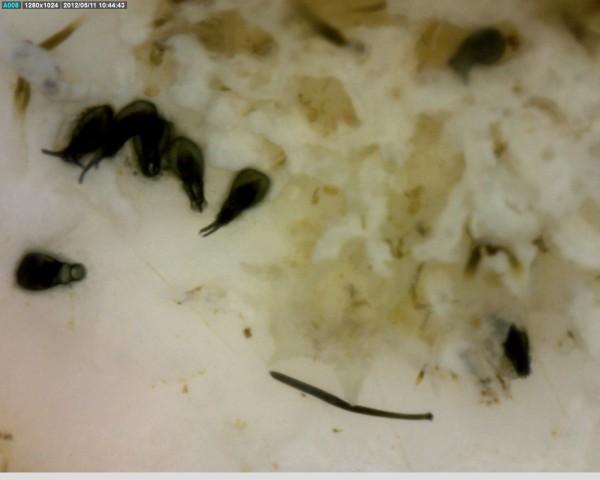
Meet Halofolliculina. It is a single-celled organism – a ciliate – about the size of a sesame seed with teeny tiny devil horns. (They are actually pericytostomial wings, not devil horns, but I won’t tell if you don’t.) My collaborators Hank Carson and Marcus Eriksen found these little buggers living on plastic debris floating way offshore in the western Pacific, which wouldn’t be terrifying in itself since a lot of strange critters live on plastic debris (see our paper for a complete list). But Halofolliculina is a pathogen that causes skeletal eroding band disease in corals, and this piece of debris was headed towards Hawaii.
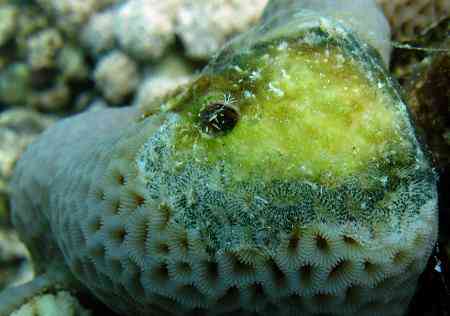
Unfortunately, Hank and Marcus didn’t save the corals of Hawaii by capturing these Halofolliculina. Skeletal eroding band disease was discovered in Hawaiian corals back in 2010. While It’s not know how this disease got to Hawaii, a lot of plastic trash washes up on Hawaii, and it’s possible that some of that trash had Halofolliculina living on it.
Along with Halofolliculina, there are all kinds of creatures living on plastic debris that wouldn’t normally be able to survive floating in the middle of the ocean. Along with the usual members of the North Pacific rafting community – gooseneck barnacles, bryozoans, rafting crabs – we found brittle stars, sea spiders, and even a shipworm that was probably really unsatisfied living on plastic. Essentially, the trash acts like tiny little islands, with small pieces hosting only a few species, and large pieces (like tangled fishing nets) hosting many more.

We aren’t sure what the impact of all these “misplaced” species is on the open ocean, or whether plastic was the sole vector that introduced skeletal eroding band disease to Hawaii. But plastic does not belong in the ocean, and we have really got to stop putting it there. No more cushy homes for devil ciliates!
Want more? You can read the paper here or here. And as always, I’m happy to answer your questions in the comment thread.
Share the post "The scariest inhabitant of the Great Pacific Garbage Patch is not what you think"

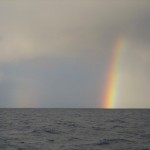
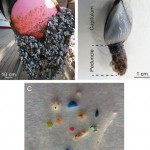
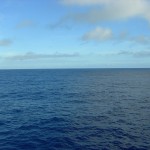
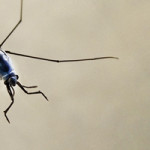

You should encourage people to take up the Plastic Free July challenge: http://www.plasticfreejuly.org/ It’s a great way to start behaviour change at an individual level to reduce our plastic use, and therefore reduce our demand on plastic as a resource.
Hi Miriam,
I was just curious, if you had to speculate, what some potential impacts of the displacement might be? I know this is a large question and that it would just be your opinion but I would be interested in hearing your thoughts.
Thanks!
PS: Since things on the internet are around forever, if you have some “super wild” speculations that you don’t want to put online – let me know and I can send you my e-mail (unless you can access it somehow behind the scenes with magic).
Hi Mak,
Essentially, all this plastic is a novel habitat for the open ocean, and the organisms that live on surfaces are not the same as the organisms that live floating in the open sea. That includes microbes. The subtropical gyres together are the biggest habitat on earth, and if the plastic is changing the ways they absorb carbon or process nitrogen, we could be in for some surprising global changes. How’s that for wild speculation? :)
I believe the largest contributors of garbage dumping to be large vessels. Everything from cruise ships to tankers to container vessels. I know that even NOAA vessels will dump a 2 mile long string of trash when out to sea for extended voyages and they’re supposed to be stewards of the worlds oceans. The US Coasties have been known for dumping batteries right next to marker pilings inshore. Nothing less than a shame.
That’s scary! I wouldn’t think of it as the scariest inhabitant of the Great Pacific Garbage Patch
Hi Chris,
It has been illegal to dump plastic at sea since 1989. It’s sometimes fine to dump other stuff (e.g., kitchen scraps; sewage) depending on where you are, but always illegal to dump plastic. I very much doubt that legitimate operations are still dumping plastic on purpose, though of course there’s accidental loss and illegal dumping. But every ship that I’ve been on (including NOAA vessels!) has been extremely careful about not dumping plastic.
Hi Miriam,
Very interesting these parasites living on plastic. Are there any on site investigations to know how large this garbage patch is?, where it travels and if there are any other(s) around the globe? I read the atlantic ocean at a similar plastic patch floating around.
Thank you
Hi Gabriel,
I’ve written about how to measure the garbage patch here and here. There are 5 major subtropical gyres – here’s an explainer. All of them are thought to accumulate trash but the most science has been done in the North Pacific and North Atlantic.
Thanks for your interest!
The answer to this dilemma is to safely recycle 100% of all human-generated waste materials, all the trash, garbage, junk, smoke, fumes and toxic chemicals. The corporation Waste Management makes a good profit from recycling, so it is a practical solution.
Then, if we spread family planning education everywhere in every nation and give every woman the right to decide if and when she may birth her children, the human population will return to a balance with the natural environment.
It’s awesome, thanks!